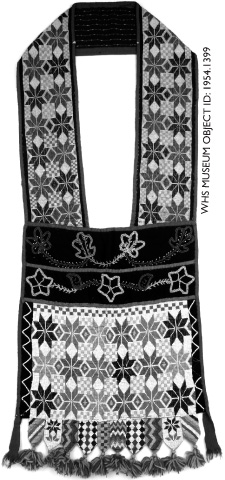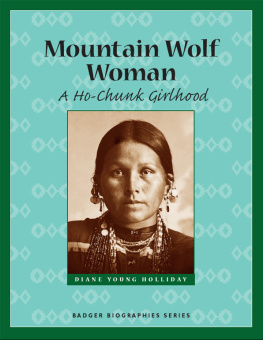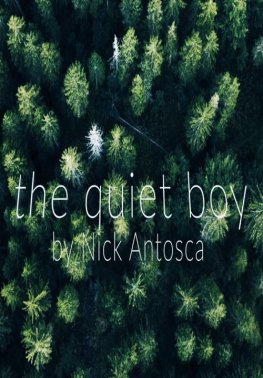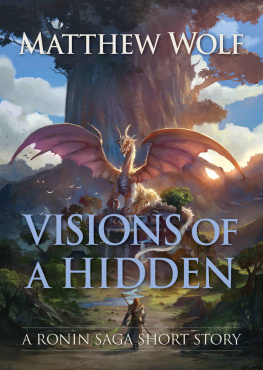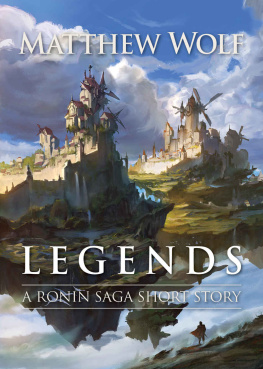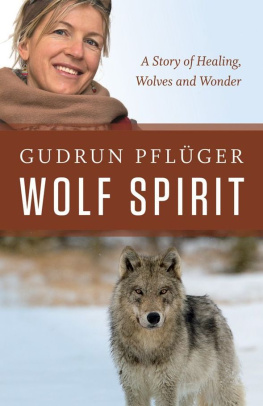
Badger Biographies
Belle and Bob La Follette: Partners in Politics
Blue Jenkins: Working for Workers
Caroline Quarlls and the Underground Railroad
Casper Jaggi: Master Swiss Cheese Maker
Cindy Bentley: Spirit of a Champion
Cordelia Harvey: Civil War Angel
Curly Lambeau: Building the Green Bay Packers
Dr. Kate: Angel on Snowshoes
Frank Lloyd Wright and His New American Architecture
Gaylord Nelson: A Champion for Our Earth
Harley and the Davidsons: Motorcycle Legends
Joyce Westerman: Baseball Hero
Les Paul: Guitar Wizard
Lucius Fairchild: Civil War Hero
Mai Yas Long Journey
Mary Nohl: A Lifetime in Art
Mountain Wolf Woman: A Ho-Chunk Girlhood
Ole Evinrude and His Outboard Motor
A Recipe for Success: Lizzie Kander and Her Cookbook
Richard Bong: World War II Flying Ace
Tents, Tigers, and the Ringling Brothers
Mountain Wolf
Woman
A Ho-Chunk Girlhood
Diane Young Holliday
Wisconsin Historical Society Press
Published by the Wisconsin Historical Society Press
2007 by State Historical Society of Wisconsin
E-book edition 2014
For permission to reuse material from Mountain Wolf Woman: A Ho-Chunk Girlhood (ISBN 978-0-87020-381-7, e-book ISBN 978-0-87020-540-8), please access www.copyright.com or contact the Copyright Clearance Center, Inc. (CCC), 222 Rosewood Drive, Danvers, MA 01923, 978-750-8400. CCC is a not-for-profit organization that provides licenses and registration for a variety of users.
www.wisconsinhistory.org
Photographs identified with PH, WHi, or WHS are from the Societys collections; address requests to reproduce these photos to the Visual Materials Archivist at Wisconsin Historical Society, 816 State Street, Madison, WI 53706.
Designed by Jill Bremigan
11 10 09 08 07 1 2 3 4 5
The Library of Congress has cataloged the printed edition as follows:
Holliday, Diane Young, 1951
Mountain Wolf Woman : a Ho-Chunk girlhood / Diane Young Holliday.
p. cm. (Badger biographies)
Includes bibliographical references and index.
ISBN 978-0-87020-381-7 (pbk. : alk. paper) 1. Mountain Wolf Woman, 18841960Juvenile literature. 2. Ho Chunk womenBiographyJuvenile literature. 3. Ho Chunk IndiansBiographyJuvenile literature. 4. Ho Chunk IndiansSocial life and customsJuvenile literature. 5. WisconsinSocial life and customsJuvenile literature. I. Title.
E99.W7H65 2007
977.5004975260092dc22
[B]
2007002539
Front cover photo: WHi Image ID 9385
The image of Jean Nicolet on page 3 is part of a mural in the Wisconsin Historical Society in Madison, Wisconsin

To my daughter Xi He Ping,
who has taught me so
much in her own journey
through childhood


Contents
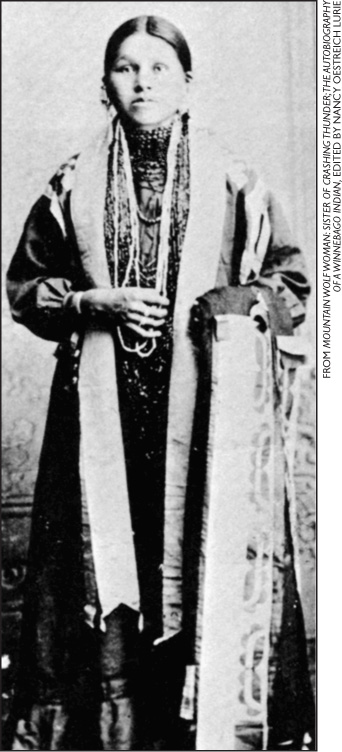
Meet Mountain Wolf Woman
and Her People

When Mountain Wolf Woman was born in April of 1884, Wisconsin had been a state for only 36 years. Although Wisconsin was a young state, Mountain Wolf Womans people, the Ho-Chunk Nation, had lived in Wisconsin for hundreds, probably even thousands, of years. They live here still.
Mountain Wolf Woman grew up at a time when the Ho-Chunk way of living remained much like that of her But other parts of her life were very different. This is the way it is for all families. Think of the many ways your life is both different from and the same as that of your grandparents and great-grandparents and great-great-grandparents.
Nancy Oestreich Lurie
To learn about Mountain Wolf Womans life in her own words, read Mountain Wolf Woman: Sister of Crashing Thunder; The Autobiography of a Winnebago Indian edited by Nancy Oestreich Lurie. Nancy Lurie is an of the Ho-Chunk people.

Nancy Lurie
When Nancy Lurie was a college student, she was adopted by one of Mountain Wolf Womans relatives and became the niece of Mountain Wolf Woman. This kind of adoption among Indian people is a special form of friendship. As the friend becomes one of the family, the friend assumes the duties and . So, when Nancy Lurie asked for Mountain Wolf Womans life story, she happily told it in her own language, and Lurie recorded it.
Lurie then turned to a Ho-Chunk friend, Frances Thundercloud, who speaks Ho-Chunk and English equally well. Frances Thundercloud Mountain Wolf Womans Ho-Chunk words into English. When you see quotes in this book, they are Mountain Wolf Womans words translated into English.
The first European to arrive in the western Great Lakes region was Jean Nicolet (jhan nik oh lay) in 1634. He was sent by the French government in Canada. But the French did not return to what is now Wisconsin for another 30 years because they were fighting the Iroquois (ear eh kwoy), Indian people who lived in eastern North America. When the French did travel back to Wisconsin in the 1660s, they came to set up missions and trading posts.
For generations before the Europeans arrival, Ho-Chunk families planted gardens of corn, beans, and squash, and they gathered many wild plants for food. They also caught fish and hunted animals with bows and arrows. They made their own clothes from tanned animal skins and built their own houses with bark or cattail mats.
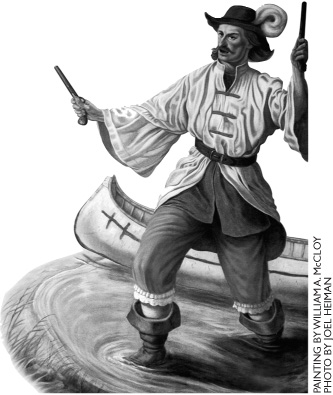
There were no cameras when Jean Nicolet visited Wisconsin in the 1600s; this is what an artist nearly 300 years later imagined he looked like.
Each year, as the seasons came and went, groups of Ho-Chunk people moved to rivers, to woods, and to fields to get the foods and materials that they needed to live. But when the French arrived in North America, Ho-Chunk life began to change.
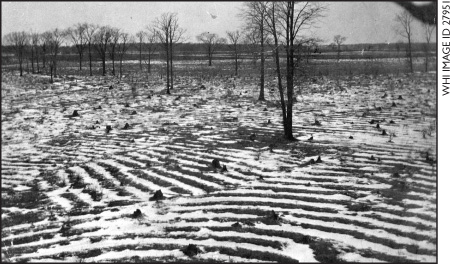
Ho-Chunk garden in winter
The Indians traded furs from animals they trapped for European goods such as kettles, knives, guns, cloth, and beads. Before the fur trade, the Ho-Chunk had been living in a large settlement in the Green Bay area. Once the French arrived, the Ho-Chunk began forming smaller villages. They spread across southwestern Wisconsin and northwestern Illinois in order to trap beaver and other animals along the many area rivers, including the Fox, Wisconsin, Rock, and Black.
